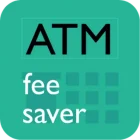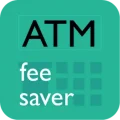Wondering how to pay for metro and bus rides in Bhutan - cash only, or do cards work too?
I loved the slow pace of Bhutan’s buses. The main route I used was from the weekend Centenary Farmers’ Market in Thimphu up to Motithang. It was just 5 ngultrum, paid in coins to the conductor. No cards or apps involved, but the simplicity actually felt refreshing. Locals were very friendly, and a student sitting next to me explained all the stops. If you’re based in a hostel around Norzin Lam or close to the Memorial Chorten, buses are the cheapest way to explore. Carry coins and enjoy the ride - it’s part of the local experience.
Honestly, buses in Bhutan were cheap but kind of a hassle. I stayed at a homestay in Dechencholing and needed exact change every time. No metro, no tap cards, no e-wallet. It’s coins only, and finding the right ones in the middle of the ride was annoying. Once I missed the bus and had to walk halfway back to Thimphu because taxis were quoting ridiculous tourist prices. If you’re short on time, just budget for taxis and don’t rely too much on the buses. They work, but only if you’re patient and carrying loose cash.
When I first landed in Paro and later stayed at Hotel Phuntsho Pelri in Thimphu, I assumed I could tap a card on buses. Nope. Every ride was cash. Conductors collect coins and give paper slips. I had to break my 100 ngultrum note at a corner shop near Changangkha before boarding. The buses are reliable but infrequent. Honestly, most travellers end up using taxis (also cash only). Don’t waste time looking for card machines - just stock up on coins at local grocery stores and you’ll be fine for public transport here.
Bhutan doesn’t have a metro system, and buses in Thimphu are very basic. You’ll see the green “City Bus Service” around Changlimithang and the Clock Tower Square. Payment is almost always in cash, usually a few ngultrum coins. No driver I met accepted cards. I stayed near Norzin Lam Road and used buses to get to Kuenselphodrang (Buddha Point) for under 10 ngultrum. If you’re carrying Indian rupees, small notes work too. Just keep change handy - bus conductors aren’t set up for large bills, and digital wallets haven’t really caught on yet outside shops.


